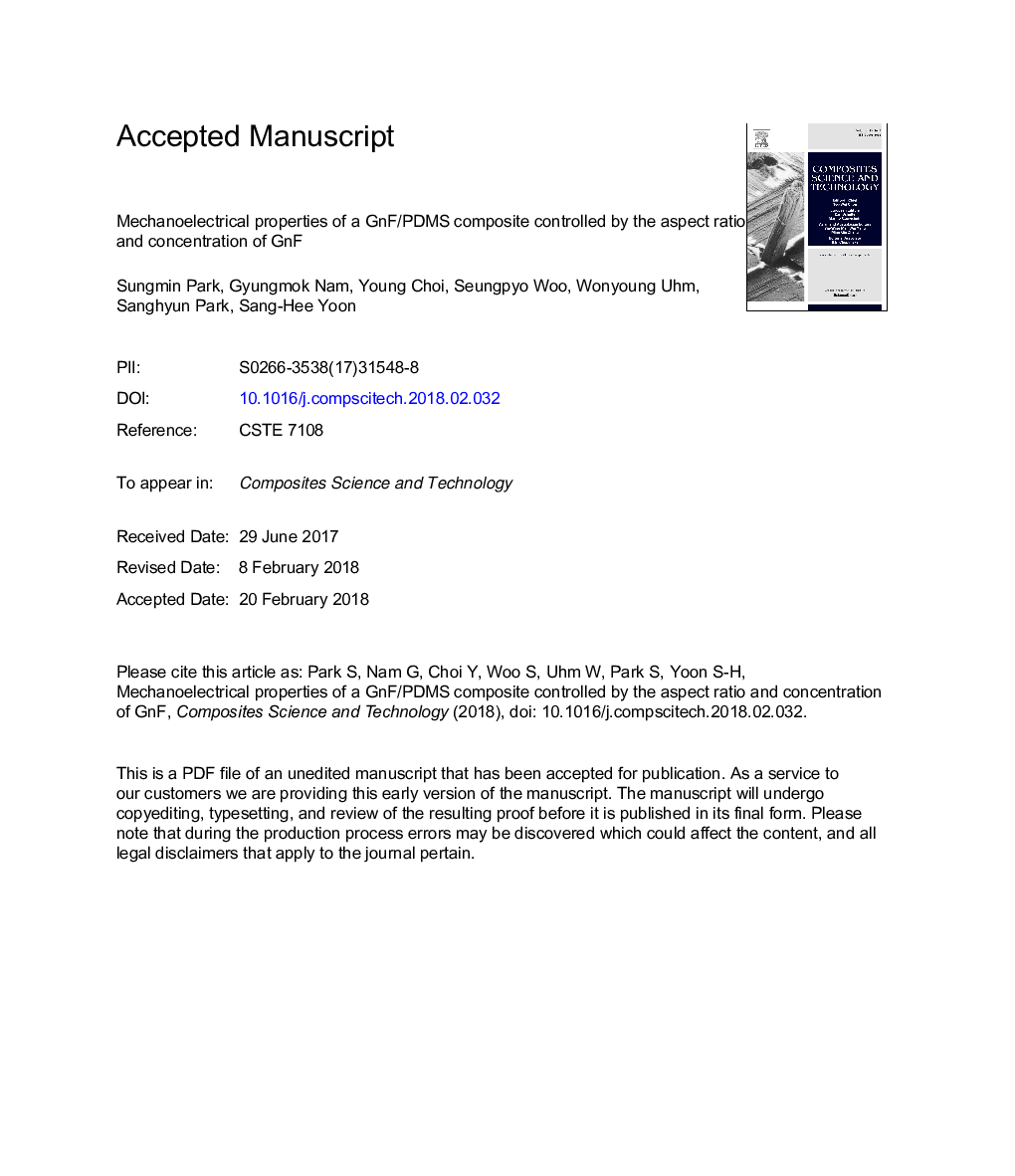| Article ID | Journal | Published Year | Pages | File Type |
|---|---|---|---|---|
| 7214533 | Composites Science and Technology | 2018 | 23 Pages |
Abstract
A functional polymer-matrix composite (PMC) with controllable material properties is emerging as a promising material for the smart sensors in structural health monitoring (SHM). A GnF/PDMS composite is developed as a new functional PMC by blending graphite nanoflakes (GnFs) with polydimethylsiloxane (PDMS) where GnF and PDMS are used as a reinforcing/conductive filler and an elastic host matrix, respectively. We characterize the mechanoelectrical property-controllable GnF/PDMS composite, mainly focusing on the following issues: (i) determination of the best solvent for the preparation of a GnF/PDMS composite solution, (ii) exploration of changes in the mechanoelectrical properties of the functional PMC induced by variations in the aspect ratio (AR) and concentration of GnF. Among 9 kinds of common solvents, benzene shows both high GnF dispersibility and excellent PDMS compatibility, therefore being chosen as the optimal solvent. Variations in GnF AR (223-1017) and GnF concentration (1.0-25.0â¯wt.%) lead to significant changes in the elastic modulus, fracture strain, electrical conductivity, and gauge factor of the functional PMC in the ranges of 0.39-13.8â¯MPa, 0.09 to 2.54, 6.97â¯Ãâ¯10â6 to 221.0â¯S/m, and 6 to about 37,000, respectively. The empirical models for predicting the mechanoelectrical properties of the functional PMC are also intensively studied. Our GnF/PDMS composite is expected to be used as a functional PMC for the development of smart sensors that detect deformation and fracture in structures.
Related Topics
Physical Sciences and Engineering
Engineering
Engineering (General)
Authors
Sungmin Park, Gyungmok Nam, Young Choi, Seungpyo Woo, Wonyoung Uhm, Sanghyun Park, Sang-Hee Yoon,
